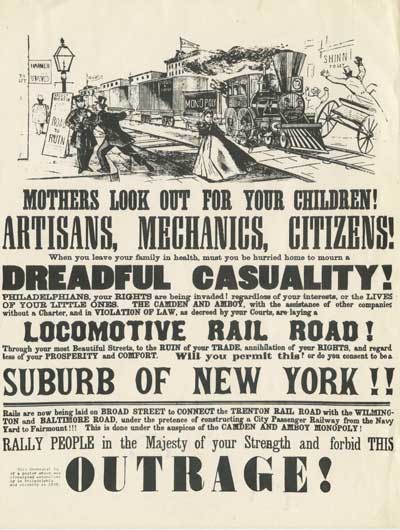Guidelines for Documenting and Evaluating Railroads
"Researcher's Guidelines for Documenting and Evaluating Railroads." (PDF)
Evaluating railroads can be problematic whether it is for National Register of Historic Places (NRHP) eligibility or consensus determinations of eligibilty for Section 106 of the National Historic Preservation Act reached through consultation between an agency and the SHPO. These Guidelines were created to ensure a consistent method of recordation and evaluation of railroads in either case; and to provide guidance in evaluating significance of the railroad using various trends and criterion shown to be widespread in Pennsylvania.
The Guidelines and this website serve as companion pieces. In an effort to provide direction, these Guidelines provide many avenues of research and supply many research questions; in some cases, this information may not be available or relevant to the resource you are investigating.
A railroad - which as a single system can be comprised of interrelated buildings, structures, and linear elements - transports goods and/or people from one point to another. Pennsylvania's rail systems can vary considerably in route length, engineering, setting, and so on. Nonetheless, for the most part, they will have similar design elements and components common to them all. While interurban lines and small-scale, privately-owned mining and industrial rail systems do not necessarily fall under traditional railway networks, we are including them in these Guidelines since research questions may be similar.
Railroad buildings and structures functioned together, thus individual resources are grouped together as one district property type: Railroad Corridor Historic District.
A Railroad Corridor Historic District shall 1) have a justifiable beginning and ending (terminus) point; 2) be evaluated as a historic district; and 3) have historically provided significant rail service. Contributing elements of a railroad corridor historic district will include all major built elements of the line that were constructed within the railroad corridor's period of significance, and constructed, owned and used by the railroad. The location of these elements along a railroad corridor may vary, and some railroad corridors may not have all of these elements. Major built elements are defined as those that were crucial to the continued operation of the line and were directly related to its function. Contributing resources primarily will be major built elements of the railroad that have engineering or architectural significance, such as bridges, stations, tunnels, etc.
The goal is to provide an understanding of the overall history of the railroad, its scale and development, its component parts and how they relate to each other, and the railroad's integrity.
For more guidance on researching railroads, see Thomas T. Taber III's "Unlocking the Unknown - Basic Handbook for Doing Railroad Research" (PDF) and David A. Pfeiffer's "Riding the Rails Up Paper Mountain - Researching Railroad Records in the National Archives."
The BHP bibliography focuses mainly on primary and secondary resources located at the Pennsylvania State Library. The BHP Railroad Bibliography (PDF) has sections on railroad company history, legislation, industry, planning studies, maps, architecture and more.
 "Philadelphia Mothers Look Out!" warning poster. Courtesy of the PA State Archives; MG 286; Penn Central Records (PRR); Historical Image File ca. 1840-1960; Photograph File |